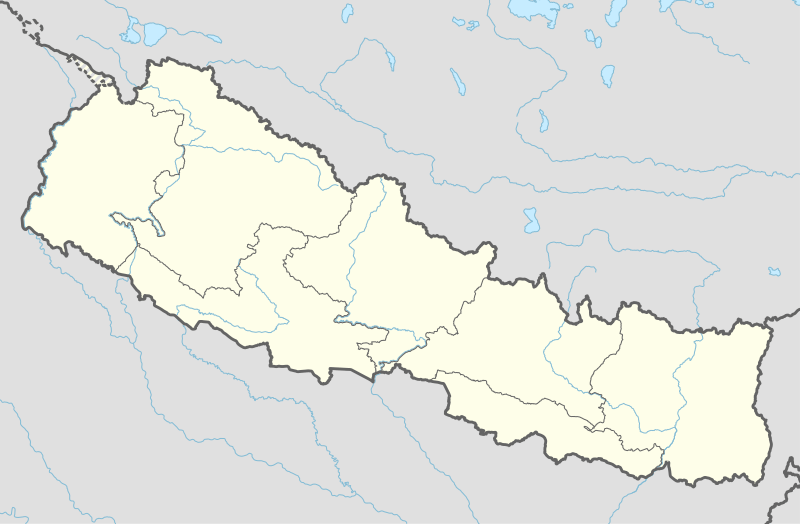Ghunsa
Ghunsa is a village of Taplejung, Nepal at elevation of 3,475 m and is a major check point for Mt. Kangchenjunga. This village came into attention after the helicopter accident that killed 24 passengers including most prominent figures in conservation work.[1]
Ghunsa घुन्सा | |
|---|---|
Village | |
Ghunsa village | |
 Ghunsa Location of Ghunsa Village in Nepal | |
| Coordinates: 27°39′40″N 87°56′10″E | |
| Country | |
| Development Region | Eastern |
| Zone | Mechi Zone |
| District | Taplejung District |
| Government | |
| • Type | VDC |
| Time zone | UTC+5:45 (Nepal Time) |
| Post code | 32907 |
Inhabitants
The area is a Sherpa village who are involved in subsistence farming and yak grazing. The main crops are maize and potatoes.
Access
The village can be accessed from Taplejung in 3 days' walk along the bank of Tamur River. The trail passes by numerous waterfalls and rivulets making it favorite among the trekkers all around the world.
Facilities
- Hotels: There are few hotels that serves for the tourist and local travelers.
- Health post: There is one health post in this village
- Education: The Ghunsa community is currently served by a six-government-staffed school that was built with the support of a group of climbers from San Francisco.
- Microhydro: A 35 kw microhydro has been constructed and is under operation. Water from Ghunsa river is used to run the turbines of this plant. The energy has served to reduce local deforestation and also helped to flourish tourism in neighboring village.
gollark: Haskell → WASM → JS → Lua maybe.
gollark: Sooooo... is there a stable similar one?
gollark: The PDF I don't understand is not helpful.
gollark: .........
gollark: I want to rewrite potatOS in such a great language.
References
This article is issued from Wikipedia. The text is licensed under Creative Commons - Attribution - Sharealike. Additional terms may apply for the media files.